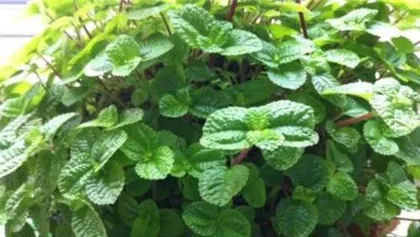Lemon mint is a beautiful and fresh plant with a rich aroma and certain medicinal value. Planting lemon mint in a pot not only purifies the air but also allows people to feel the beauty of nature. However, how to care for lemon mint in a pot? The following will introduce it in detail for everyone.

Choose a suitable pot
Before planting lemon mint, we need to choose a suitable pot. The material of the pot can be plastic, ceramic, or cement, but it is important to note that the pot must have drainage holes to avoid water accumulation and root rot.
Choose suitable soil
Lemon mint prefers warm, moist, and well-draining soil, so we need to choose suitable soil for planting. You can buy soil specifically for growing flowers on the market, or you can mix your own soil. It is recommended to use a mixture of materials such as peat soil, leaf mold, and perlite.

Planting lemon mint
Before planting lemon mint, we need to put the soil into the pot, then plant the lemon mint in the soil and gently pat it down. Water thoroughly to make the soil fully moist.
Sunlight
Lemon mint likes a warm and humid environment, but it also needs plenty of sunlight because sunlight can promote the growth and development of lemon mint. Therefore, when planting lemon mint, we need to place the pot in a sunny place, but avoid direct sunlight.
Watering
Lemon mint needs sufficient water to maintain its growth and development, but it is also important not to overwater. Generally, we can water 2-3 times a week. The specific amount and frequency of watering can be determined by the temperature and humidity.

Fertilizing
Lemon mint needs a moderate amount of nutrients to maintain its growth and development, so we need to fertilize it once a month. Fertilizer can be organic or chemical, but it is important not to over-fertilize to avoid harming the lemon mint.
Pruning
Lemon mint grows quickly. If not pruned in time, it will become lush and messy. When growing lemon mint, we need to regularly prune branches and leaves to keep the plant shape neat and beautiful.
Pest and disease control
Lemon mint is susceptible to aphids and powdery mildew. If you find a powdery substance on the leaves or phenomena such as yellowing and curling, it is necessary to carry out pest and disease control. You can use pesticides or fungicides for treatment.
Repotting
Lemon mint likes a warm and humid environment. If the temperature is low or the air is dry, the pot needs to be moved indoors or humidified.
Insulation
Lemon mint is susceptible to frost damage in cold weather, so we need to take insulation measures for it in winter. You can add soil or straw around the pot, or place heat-insulating materials such as wooden boards under the pot.
Avoid strong winds
The roots of lemon mint are shallow and can be easily blown over or shaken by strong winds, so we need to place the pot in a place sheltered from strong winds.
Prevent waterlogging
If the roots are in a waterlogged state for a long time, they are easily damaged. We need to drain regularly to avoid water accumulation.
Pay attention to the treatment of diseased leaves
If you find spots or lesions on the leaves of lemon mint, they need to be treated in time. The diseased leaves can be picked and burned to prevent the spread of pathogens.
Replace the soil regularly
Lemon mint needs nutrient-rich soil to maintain its growth and development, so we need to replace the soil regularly to ensure that the lemon mint gets enough nutrients.
Caring for lemon mint in a pot requires attention to many aspects, including choosing a suitable pot and soil, regular fertilizing and pruning, etc. If you can do these, you can create a fresh and fragrant small garden that allows people to feel the beauty of nature.